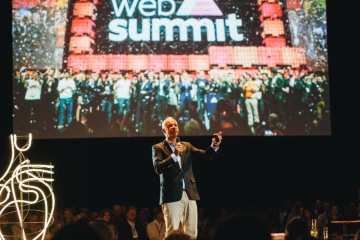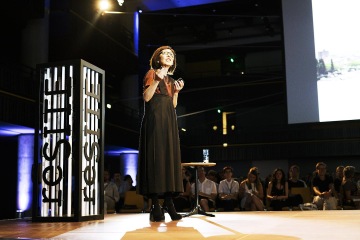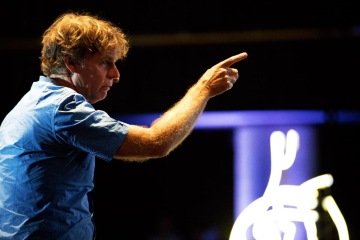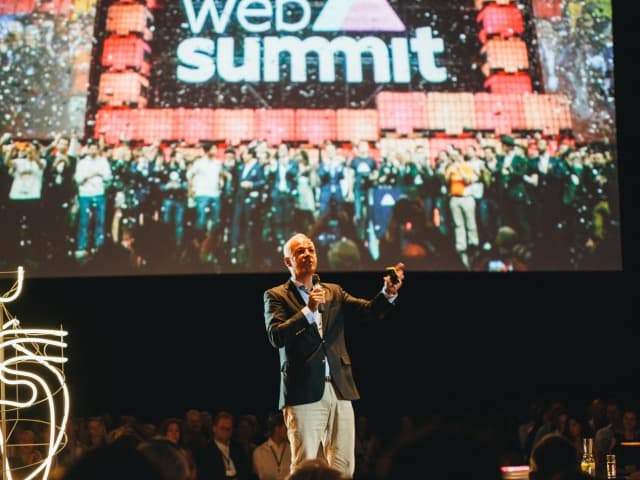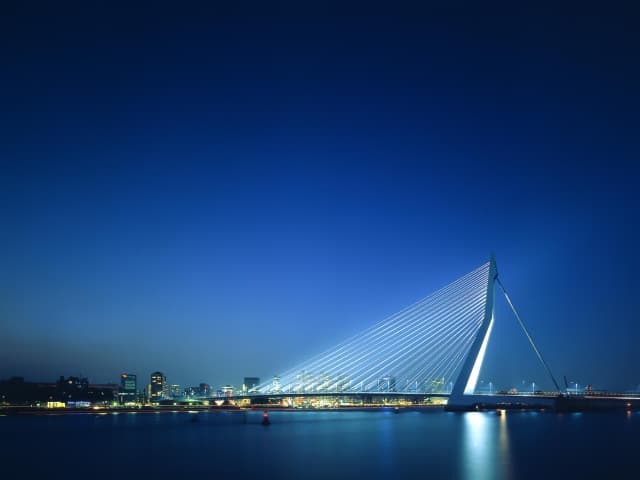
"The Future of Cities Depends on Innovative Infrastructure" Concluded reSITE 2017
The sustainability of our future relies on data sharing, new models of private-public partnerships, quality open space, innovation and soft infrastructure that allow for innovation and creativity.
The Future of Cities Depends on Innovative Infrastructure
The sustainability of our future relies on data sharing, new models of private-public partnerships, quality open space, innovation and soft infrastructure, namely the social networks, human talent and cultural platforms that allow for innovation and creativity. Kazuyo Sejima from SANAA, Deputy Mayor of Paris Jean-Louis Missika and the inspiring and visionary architect Winy Maas, MVRDV, discussed how to improve the quality of life for the next generation, in front of over one thousand visitors at reSITE 2017 in Prague.
Although focused on infrastructure, the conversation wasn’t limited to concrete and tubes. We need to invest in green infrastructure, flexible design and multifunctional transit hubs in order to feed the creative and cultural sector that makes our cities alive and magnetic.
Big Impacts of Small Planning
Martin Barry’s emotional opening address defined reSITE’s sixth event as a generational statement. Paraphrasing Michael Bloomberg, Barry demanded that: “Cities need to be cool, competitive and in control — the infrastructure topic is mainly about controlling our future.”
We must use design as a tool for our children’s children, and we must do it for our cities to be competitive, and cool.
The Mayor of Paris’ right hand Jean-Louis Missika presented one of the most ambitious urban projects of the 21st century, Réinventer Paris. He said that the future is driven by local authorities, small-scale projects and innovation. He highlighted the importance of putting the user at the center of the process and how disruptive, temporary architecture can generate excitement and other productive activities. An ambassador of sharing, he stated:
Data about commuting, logistics and energy needs to be shared in the future. It’s a question of life or death for cities.
Rui Ramos-Pinto Coelho from Invest Lisboa considers soft infrastructure the most complex part in developing a city. His presentation took place during the discussion panel called "Infrastructure as Catalyst of Urban Development" at reSITE 2017 In/visible City conference.
A big part of our success was about investing in invisible, or soft infrastructures: partnerships, incentives, and hundreds of small projects that brought curb-cut effect to Lisbon.
The importance of collaboration and innovation was highlighted across all presentations. The private, public and civic sector need to come together to be bold in order to tackle the challenges of the future. The point was made repeatedly that there is no other alternative.
Innovation, Flexibility and Multi-functionality
Kazuyo Sejima, the event’s most highly anticipated guest from Tokyo-based SANAA walked the fascinated audience through her most recent projects — the word “buildings” doesn’t seem fit to describe her architecture when speaking of places like the Lausanne Rolex learning center, Grace farms and Louvre-Lens.
We wanted to create a space where people can easily meet and communicate. We’ve tried to make continuity between the building and the park. Maybe this is the way how to innovate, mix galleries with the surroundings.
Future-Proof Cities
Dutch architect and infrastructure expert Caroline Bos from UNStudio went beyond the sustainability concept when she spoke about cities that have to be future-proof.
We have to make sure we work in adaptable ways. Resiliency comes from creating adaptability. Collecting shared intelligence is sometimes the only way to understand if a project is viable or not.
A city with a circular mobility system can replace excess infrastructure with housing and green spaces — this is her advice on how to deal with the legacy from the past, converting it to create a better path for the future.
Why Dreaming is Important!
Dutch superstars were on full display at reSITE. Winy Maas brought the audience to a dream-like state, stressing the big picture and connections that have peripheral and catalytic impacts — those that are physical as well as social and economic.
We try to make connections everywhere. So we can stitch the city together. Don’t think in blocks. Don’t think in buildings. Think connectivity.
Maas went seamlessly between architecture dreams and fantasy to reality. A seemingly simple thing like his external staircase at Stationsplein, outside Rotterdam Central Station had an activating, unpredictable impact that they couldn’t imagine. Infrastructure is activating not only mobility, but also a destination. This is why dreaming is extremely important as projects can take 5 to 7 years to come to fruition. Winy Maas underlined that architects cannot stay out of political questions. Politics is making cities and we need to engage in that — urban policy and politics are the new democracy. During the final keynote lecture, Teddy Cruz inspired the (still) full audience to think of the city as “a political project”.
We have to reinvent the government, as collaborative and inclusive.
Related Stories
Five Talks On Using Design for Social Impact
Socially conscious designers leverage economic, environmental, political and cultural factors and consider them in their efforts to improve the livability of the built environment.
Six Talks on Designing Cities to Include Greenspace
Cities benefit tremendously from the incorporation of greenspace, a connection to nature that is an arena to cultivate community.
Four Talks on Smart Cities: Do They Enhance or Weaponize our Environment
Technology is embedded in contemporary cities. From surveillance cameras to street lights, architects, scientists, planners, and engineers are finding new ways to streamline urban environments to improve the quality of life. Yet, some worry that increasing reliance on technology could lead to its potential abuse, especially when it comes to personal privacy.
Women Make Cities: Five Talks by Women Who Are Shaping the Urban Environment
Within the fields of architecture and urban planning, women are making their case for creating built environments that serve all genders. To close the gap of gender inequality and make spaces more inclusive and safe for women, the unique perspective provided by these speakers is essential to augmenting our idea of design. To move towards more inclusive cities, women must be at the forefront of change.
Related Talks
How Investing in Infrastructure Revitalized Lisbon
Executive Director of Invest Lisboa Rui Ramos-Pinto Coelho describes the rapid turn around of Lisbon from a poor city into a center of tourism, real estate investments, and entrepreneurship.
Jean-Louis Missika on Redefining Urbanism in Paris
Jean-Louis Missika, Deputy Mayor of Paris, participates in a discussion on his projects to reinvent Paris through various initiatives and chagnes. He believes that public space is the future, and is shifting towards increasing and improving this space.
Caroline Bos on Building Cities for the Future
Caroline Bos, a Dutch urban planner and co-founder of the architectural design center UN Studio, questions the sustainability of our current cities and how to make them last into the future. She brings up ideas of resilience in cities, working with a circular economy, and managing resources more sustainably and effectively.
How Border Zones Became a Physicalization of Fear with Teddy Cruz
Teddy Cruz, professor of Public Culture and Urbanism at UC San Diego and co-founder of Estudio Teddy Cruz, discusses the potential he sees in border zone communities. It is not simply about constructing new buildings, but to creating positive change by reorganizing the existing socioeconomic relations and their spatial aspects.



